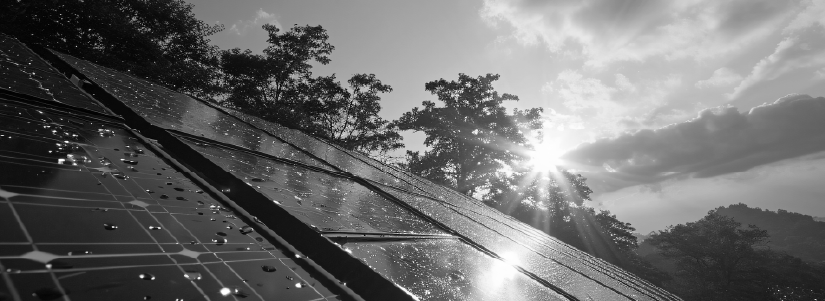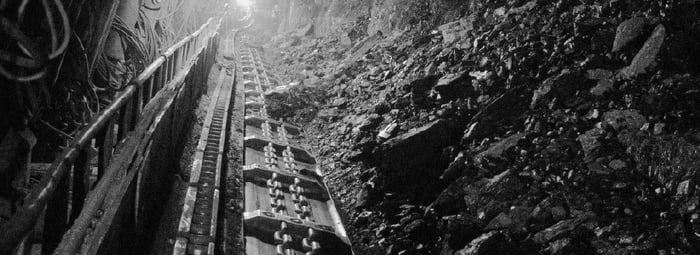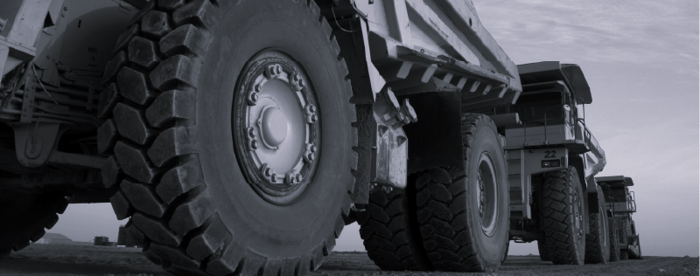Mining - Solar Panels
Tips & Tricks • 4 min read • March 21, 2024 • Written by: Natasha Osborne

In previous blogs we have discussed sustainable, renewable energy sources. This week we will be exploring solar panels and how this technology can be used within various industries. We will uncover how this type of energy source can benefit these industries and help organisations to meet targets and goals for lowering emissions by opting for more environmentally friendly alternatives.
Why use solar energy for mining?
Solar panels are environmentally sustainable and provide several benefits that are advantageous to the mining industry. Typically, mine sites are in remote locations and cover a large space. Solar panels can be used to offer an off-grid energy solution, using the photovoltaic panels as a power supply. Mining sites need reliable surveillance, communication, and lighting services which all require power, using solar panels to generate this electricity would be extremely beneficial because companies are more in control of producing their own power and don’t need to rely on taking power from the grid. The electricity generated from the solar panels can support the function of the mine sites, while lowering emissions from non-renewable power sources.
Solar Farms
The use of this cutting-edge technology is able to revolutionise the mining industry. Solar farms substantially reduce carbon emissions, resulting in a cleaner and healthier environment. They also offer significant long-term cost savings and provide operations the ability to take advantage of the market, keeping your operations running consistently with solar-powered solutions. Producing your own power means you can reduce the amount you take from the grid, which lowers costs, it also mitigates the risks involved with power outages and other disruptions.
The Impact of Solar Panels on Mining
As the demand for solar panels becomes more popular, so do the minerals and materials required to produce them, in particular silver. Silver powder is turned into a paste, mixed with glass powder and organic raw materials. The paste is loaded onto a silicon wafer. Silver in a paste form provides a conductive layer on the front and back of silicon solar cells. When the light strikes the silicon, electrons are set free, and the electricity is carried for immediate use or stored in batteries.
This has resulted in the mining production not being able to keep up with the demand. There has been a severe shortage of silver due to the continuing demand for the metal. According to the 2023 World Silver Survey ‘’the global silver market was undersupplied by 237.7 million ounces in 2022, which the Institute says is “possibly the most significant deficit on record.”
The Silver Institute forecasts ‘’a 140Moz silver deficit this year, the third consecutive annual shortfall, against robust silver industrial demand, which is expected to grow 8% to a record 632Moz.’’ The main areas of investment include photovoltaics, power grid and 5G networks. This will also be impacted by an increase of electronics, and vehicles. If the current trend continues, where the surge in demand for silver cannot meet the demand to produce solar panels, it is anticipated that the price of silver is expected to continue to rise.
Who’s getting involved?
Rio Tinto have plans for their first solar panel plant at their Gudai-Darri mine site. They are installing a 34MW photovoltaic solar farm that will consist of approximately 100,000 solar panels with photovoltaic cells to convert sunlight into electricity, generating electricity which is then managed through inverters that convert it into useable power.
Rio Tinto have acknowledged that they can further reduce their emissions with a large-scale solar plant. They currently have small-scale solar installations in operation across their rail network, but a larger-scale plant will be able to generate electricity to meet the demand of running this site. It will cover approximately 85% of the mine’s average electricity needs. Annually it is estimated to reduce 90,000 tonnes of carbon, the equivalent of 28,000 cars off the road. This is something that they are considering implementing in other locations, such as Australia.
Last year the Hambach opencast mine in Germany constructed the RWE Neuland Solar Farm to supply more than 3,1000 homes with green electricity from 22,000 solar modules. The modules absorb sunlight and optimised electricity is stored in batteries. There are already a number of solar farms currently in operation and the plants will have a total capacity of 100MW. These plants are proving to support the local area, reducing carbon emissions, and pushing for cleaner energy alternatives.
AngloGold Ashanti has also announced that they plan to construct an operation of 62MW using wind and solar generation at the Tropicana mine site. The project is due to be completed in early 2025 and integrated into the existing 54MW gas-fired power station at the mine. ‘’ The renewable infrastructure will comprise of four 6MW wind turbines, each with a hub height of 130m and rotor diameter of 165m, equal to the largest wind turbines in Australia. It will hold an additional 44,100 solar panels with single access tracking to make up a 24MW PV solar plant.’’
With solar panels being installed in these mine sites, it could lead the way to encourage more mine sites to do the same, take advantage of the sun’s natural resources and generate electricity to power their sites. This will help companies meet their targets and benefit the global targets of lowering carbon emissions.
We hope you enjoyed reading this week’s blog and learnt something new. Make sure that you are subscribed to our latest news, so you don’t miss out on any of our new posts. Feel free to share the blog with others who may enjoy it too. Why not leave a comment in the section below and let us know what you’d like to read about next time.
Related Articles

Tips & Tricks
The Future Of Coal

Industry Insights
The Future of Mining Machinery: Growth, Technology, and Procurement
Don't Miss Out On Our Updates
Sign up and Join Our Newsletter Today

